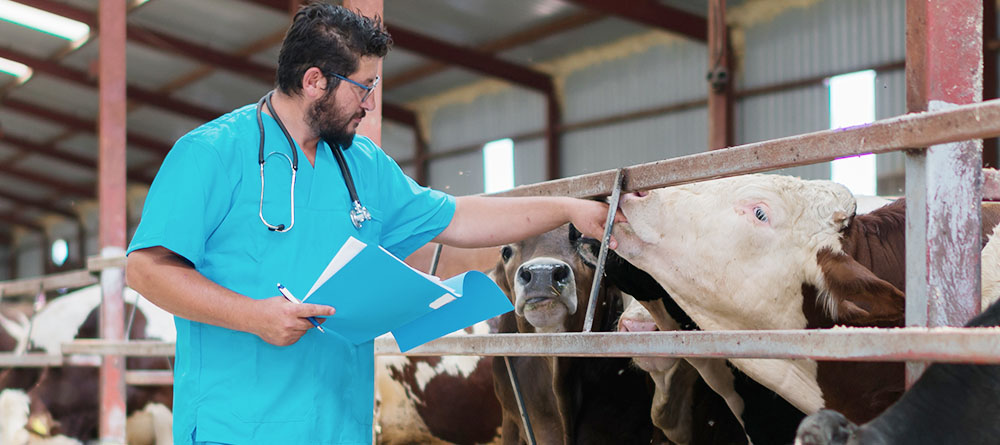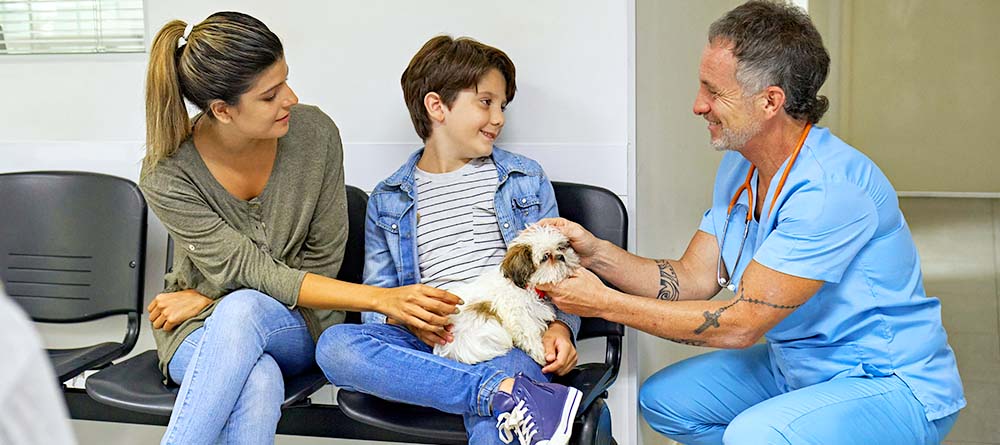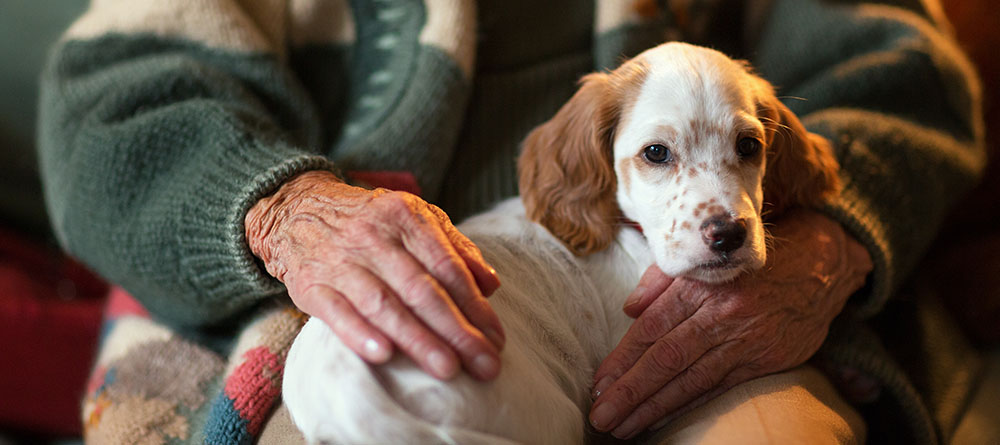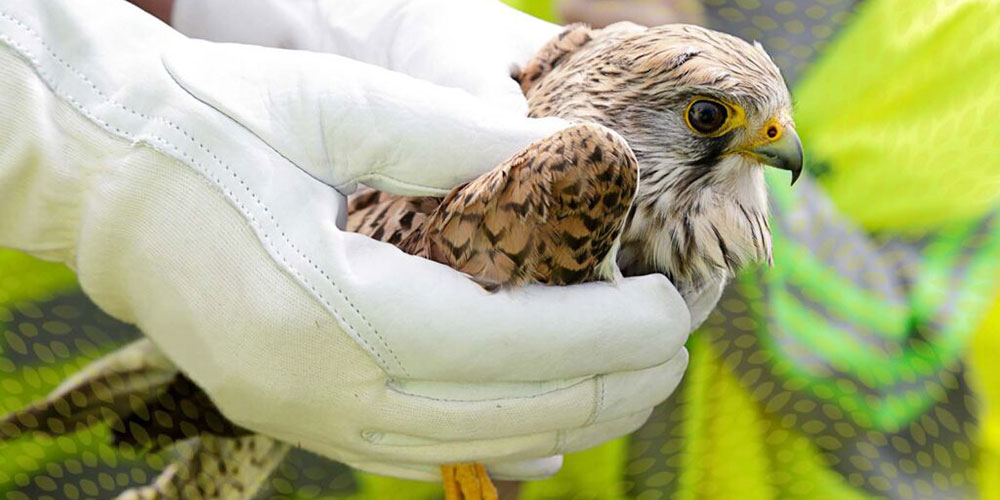As such an expansive field, there are several different types of veterinary medicine you can practice. When people think of veterinary specialists, however, they’re most accustomed to picturing small animal vets, specialists who work in laboratory animal medicine, or other specialized sectors of practice like dentistry, dermatology, or ophthalmology.
One type of veterinary practice that’s easy to overlook is veterinary public health. Even if you have a solid understanding of both veterinary medicine and public health, it can be difficult to understand how they intersect. But, as it turns out, they’re more intertwined than you might think.
Animal care impacts human health in a litany of ways. But before we dive into those details, it’s important to gain a better understanding of veterinary public health in general.
What is veterinary public health?
“It can be disorienting, initially, to consider veterinarians as involved in public health,” admits Dr. Satesh Bidaisee, professor of public health and preventative medicine and assistant dean for the School of Graduate Studies at St. George’s University (SGU). But once you explore the numerous ways caring for animals can affect human wellness, he notes, it becomes difficult to ignore.
To help wrap your head around the concept, it can be useful to think about the various elements that contribute to our wellness as a population. Everything from the food we eat to the safety of our environments and even our social interactions can all play a role.
“Veterinary public health is all the veterinary applications that impact the social, mental, and physical well-being of humans.”
Dr. Bidaisee explains that animals are often involved in each one of these components. As such, maintaining their health and safety can directly contribute to positive health outcomes in humans. “Veterinary public health is all the veterinary applications that impact the social, mental, and physical well-being of humans,” he says.
8 Examples of veterinary public health
Though veterinarians practice countless specialties in various settings, they all support public health in one way or another. Consider the following examples of veterinary public health in action—you may be surprised to see all the ways vets are working to improve our daily lives.
1. Promoting positive human–animal relationships
The type of veterinarian most folks are accustomed to interacting with is a small animal vet. These specialists work to keep dogs, cats, and other pets healthy. And while caring for these animals, small animal vets also work closely with their owners.
“You’re not just treating the animal, necessarily. You are fostering the human–animal bond,” Dr. Bidaisee explains. “By supporting that particular relationship, you are actively contributing to human health.”
The National Alliance on Mental Illness (NAMI) actually notes that pet ownership has been proven to reduce stress, depression, and anxiety in humans, improving their overall quality of life in numerous ways. In many cases, pets also help owners commit to healthy routines, such as daily walks.

2. Ensuring a stable food supply
It’s true that not everyone consumes animal byproducts, but many do include them in their diets—especially in the US. The most recent reports have indicated that the average American consumes well over 200 pounds of meat and poultry each year, the second-highest consumption rate worldwide.
Veterinarians play a critical role in ensuring our food supply keeps up with such high demand. One of the ways they do this is by synchronizing estrus (the time when mammals are most fertile) among cattle and other food animals. “We do this so they can all be pregnant at the same time, and all deliver at the same time,” Dr. Bidaisee offers. “That makes production easier.”
3. Preventing and controlling disease outbreaks
Did you know that more than 60 percent of infectious diseases in people can be spread from animals? Zoonotic diseases (also known as zoonoses) are caused by germs that spread between animals and people, and the CDC actually notes that three out of every four new or emerging infectious diseases in people come directly from animals
Common zoonotic diseases you’re likely already familiar with include avian flu, Lyme disease, and West Nile Virus. Veterinarians have particular expertise in the major health problems that large health organizations are trying to combat.
“Think of disease outbreak investigations, for example. The CDC employs veterinarians for things like that,” Dr. Bidaisee explains.
Vets also work to prevent illness from consuming contaminated foods by adhering to strict regulations. Many are employed in various inspection roles to ensure animal products and facilities are sanitary.
4. Providing educational opportunities
All veterinarians are involved in some sort of education that contributes to human wellness. Small animal vets, for example, may discuss sanitation and hygiene with a new pet owner—conversations that help ensure that both the animal and the person stay healthy.
Zoo veterinarians are another great example. These specialists are able to introduce communities to species they may not otherwise have the opportunity to appreciate, due to both the geographic distances and that some animals are becoming endangered.
“They’re collecting these animals in different zoos, contributing to the very knowledge, understanding, and appreciation of animals,” Dr. Bidaisee says. “Kids in future generations will be exposed to these species because of quality veterinary care.”

5. Hunger relief in developing countries
We’ve already discussed the importance of safe and adequate food production in countries with robust economies. But developing countries depend on animal resources even more.
One example of hunger relief that hinges on veterinary care is a program in South Sudan called Goats for the Old Goat, from the GEMS Foundation. People from across the world can contribute to donate a female goat to a family within the South Sudan community, providing them with nutritious milk and potential income opportunities—she-goats bear 2 kids per year, and the baby goats can be sold for profit at market, providing money to buy other essential food and hygiene items.
Programs like this, of course, rely on donations. But they also rely on the work of high-quality veterinarians, as the goats need to stay healthy for this life-sustaining process to work. “The animal well-being is inextricably linked to that of the community well-being,” Dr. Bidaisee explains.
6. Maintaining safe living environments
Wildlife veterinarians are heavily involved in conservation efforts. While that clearly contributes to animal health, it also benefits humans in some pretty sizeable ways.
Think about what happens when a native species becomes endangered or extinct. When a creature that has been a critical part of a particular environment starts to disappear, it affects every other species within that environment.
Dr. Bidaisee points toward the example of elephants and rhinos becoming less populous due to ivory poachers. “When you remove these types of key species, it can disrupt an entire ecosystem,” he says. “These animals are no longer going to keep some of the other predators in check, so humans could start to become targeted more.”
7. Offering social stimulation for those who need it
We’re learning more and more about the detrimental effects of social isolation. Even before this became a common topic of conversation in the wake of city-wide lockdowns and temporary periods of isolation due to the COVID-19 pandemic, research has long suggested that loneliness contributes to numerous health issues and even a higher risk of death.
Though social isolation can be problematic for everyone, older populations are particularly susceptible. As life expectancy increases and people live longer, they’re finding themselves separated from their children and grandchildren. Animal interaction is emerging as a way to combat this type of loneliness.
“They’re using animals for social stimulation for these elderly persons, and that’s proving to be very constructive in terms of mental health,” Dr. Bidaisee offers. Healthy animals that receive excellent veterinary care can greatly improve the quality of life for aging individuals and beyond.

8. Combatting antimicrobial resistance
Perhaps you’ve heard about how overusing antibiotics can lead to drug-resistant bacteria that cause widespread illness. But did you know the problem extends beyond medications prescribed to humans?
Antibiotics are used extensively in food production to promote animal growth and keep them from becoming sick. Dr. Bidaisee explains that this can translate to human exposure as the antibiotics end up in waterways, on other foods, and on the meat itself.
While veterinarians have contributed to antibiotic overuse in food animals in the past, many are becoming part of the solution by utilizing drugs more judiciously. They’re also finding alternatives to medication. “We’re looking at ways in which we can use natural things to counteract a lot of these micro-organisms,” Dr. Bidaisee says.
Help promote veterinary public health
It’s clear that veterinarians play a crucial role in their communities’ health no matter what type of career they pursue. Everyone from companion animal practitioners to wildlife vets plays a part in the larger landscape of veterinary public health.
The St. George’s University (SGU) School of Veterinary Medicine understands the significance of animal public health. That’s why students earning a Doctor of Veterinary Medicine (DVM) have the choice of pursuing a dual-degree option, combining a traditional DVM curriculum with a Master of Public Health (MPH) program.
Learn more about how you can gain a unique understanding of the interchange between animal health and the human population by visiting our DVM/MPH program page.
*This article was originally published in 2019. It has since been updated.

